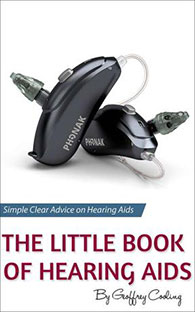Single Sided Hearing Loss
Single sided hearing loss, unilateral hearing loss or single-sided deafness (SSD), is typically a hearing loss that occurs in one ear only, with the other ear being at normal hearing levels. The hearing loss may be moderate, severe or complete depending on the presentation and the cause. Single sided hearing loss can be congenital (from birth) or acquired (occurs after birth). If and when a hearing loss happens in the better ear, the person's hearing loss will be re-classified as Asymmetrical (worse in one ear than the other).
Single sided hearing loss can be sensorineural (damage to the inner ear or along the nerve of hearing) or conductive (a problem in the Middle ear such as otosclerosis) in nature. The type and severity of the hearing loss dictate the treatment options available. The symptoms and effects of unilateral hearing loss can vary from person to person.
Obviously, one of the leading issues is not being able to hear on one side. However, this type of loss also ensures that many people suffering from it have difficulty determining the direction of sounds. This inability also makes it challenging to separate background noise from the sounds you want to hear.
If You Find The Information on This Page Helpful, Please Rate The Page
Your Ratings allow us to understand if the info we provide is helpful
Rate this article
(Rated 4 stars by 46 people)





Causes of Single Sided Hearing Loss
This type of hearing loss has multiple causes dependent on whether the damage is sensorineural or conductive. Typical causes of sensorineural single-sided hearing loss are:
- Viral infections
- Meniere's disease
- Ototoxic drugs
- Head or ear injuries
- Surgical intervention to remove brain tumours
Usual causes of conductive single-sided hearing loss are:
- Viral infections (chronic infection can destroy the bones in the middle ear cavity)
- Bacterial infections (same as above)
- Otosclerosis
- Ossicular disconnection
- Destruction of the tympanic membrane (eardrum)
- Head or ear injuries
While these lists are not exhaustive, they pretty much cover most of the more common causes of single-sided hearing loss. More often than not, the treatment for most single-sided hearing loss is hearing aids of one type or other. However, in the cases of conductive hearing loss, there can be a medical treatment that will restore, or at least reduce the hearing loss. If the failure is complete, a CROS (contralateral routing of signal) system can be used to restore a sense of sound from the deafened side.
Treatment Options for Single Sided Hearing Loss
As I have said, treatment options are dependent on the underlying cause of the problem and the classification and severity of the hearing loss. A conductive single-sided hearing loss may be treated with a medical procedure involving surgery. In general, any sensorineural hearing loss will be treated with hearing aids of some type. Let's discuss the possible treatment options.
Conductive Single-Sided Hearing Loss
Dependent on the problem, there are several types of surgical remediation procedures that can repair the damage and cure or at the very least reduce the hearing loss. For instance, in the case of Otosclerosis, a procedure called a stapedectomy may be undertaken which replaces the Stapes (stirrup bone in the middle ear) with a prosthesis. In many cases, this will return someone's hearing to normal or near normal.
In the case of the complete destruction of the eardrum through trauma or infection, there is a procedure called tympanoplasty which can replace the eardrum with a skin graft. The operation has a high success rate and it will reduce the hearing loss. In the case of ossicular disconnection, an operation is undertaken to repair the ossicles, this will more often than not minimise the hearing loss.
Sometimes though, remedial surgery may not be an effective strategy or there may have been too much damage to the middle ear cavity and surrounding tissue. In case such as these, hearing aid technology may well be the best option. In the case of conductive hearing loss, there are two strategies using very different types of hearing aids.
Traditional Hearing Aids
Traditional hearing aids are more often than not used and in fact, they usually provide outstanding levels of hearing. Conductive loss is actually an easy hearing loss to treat with hearing aids from a technical point of view. Most people who suffer conductive hearing loss have excellent hearing in their inner ear. So the job is to overcome the impediment of the middle ear problem with sound levels. When you do, the rest of the mechanism of hearing performs as it naturally would.
In some cases though, discharging ears especially (ears that constantly discharge fluid), traditional hearing aids may not be the ideal solution. While they will restore hearing, they may encourage infection. In cases such as this, a specially designed hearing aid technology called a BAHA (Bone Anchored Hearing Aid) is the ideal solution.
BAHAs ( Bone Anchored Hearing Aids)
A BAHA solution is, in fact, a mixture of surgical intervention and hearing aid, the bone anchored part of the name gives the clue. In order to bypass the middle ear, a small surgically implanted abutment is used to transmit sound by direct conduction through the bone to the inner ear, bypassing the external auditory canal (ear canal) and middle ear.
A processor (hearing aid device) is then attached to the abutment and it gathers and processes sound, before transferring it through the abutment and the skull bone. A BAHA is quite a big step and it is something that needs to be considered carefully.
Sensorineural Single-Sided Hearing Loss
Again, treatment depends on the severity of the hearing loss, anything up to a moderate hearing loss may well be best treated with a traditional hearing aid. However, it does depend on the severity of the hearing loss, for instance, if the hearing loss is very severe, using a hearing aid in that ear may transfer sound through the skull and actually confuse the better ear. So the treatment options are:
Traditional Hearing Aids
As I said, depending on the hearing loss, a traditional hearing aid may well be the best option for treatment. It will restore hearing to the worse side, allowing people to hear better on that side and hopefully restoring their natural sense of localisation.
CROS and Bi-CROS
CROS or Contra-Lateral Routing of Signal (CROS) is a different type of hearing aid technology for people with unilateral hearing or single-sided hearing loss of severe or profound classification. This type of technology concept allows two implementations: CROS and BiCROS. The difference between the two is very simple, CROS is used when there is a hearing loss in one ear only. BiCROS is used when there is a hearing loss in both ears with one being severe to profound.
Basically, the CROS or BiCROS system transfers the sound from the worse side to the better side. In doing so, it preserves the normal auditory cues which fool the brain into believing that it is hearing from two ears. The effects are amazing, I am still amazed every time I fit a CROS or BiCROS by the reaction of the person I have fitted. When you are diagnosed with a single-sided hearing loss there are many things you need to consider. While many wish to understand the cause, it is more important to focus on the possible treatment. Each treatment offers its own pros and cons, the key is for you to move forward with the one that is right for you. The quicker you sort out treatment, the quicker you can get on with your life. You can learn more about CROS and Bi-CROS hearing aid solutions here.
Find An Independent Hearing Aid Centre in Your Area
Arrange a consultation with a trusted Independent hearing healthcare professional in your area
Subscribe to our Newsletter
Don't worry, we hate spam too - that's why we only send out content you will want to read.


